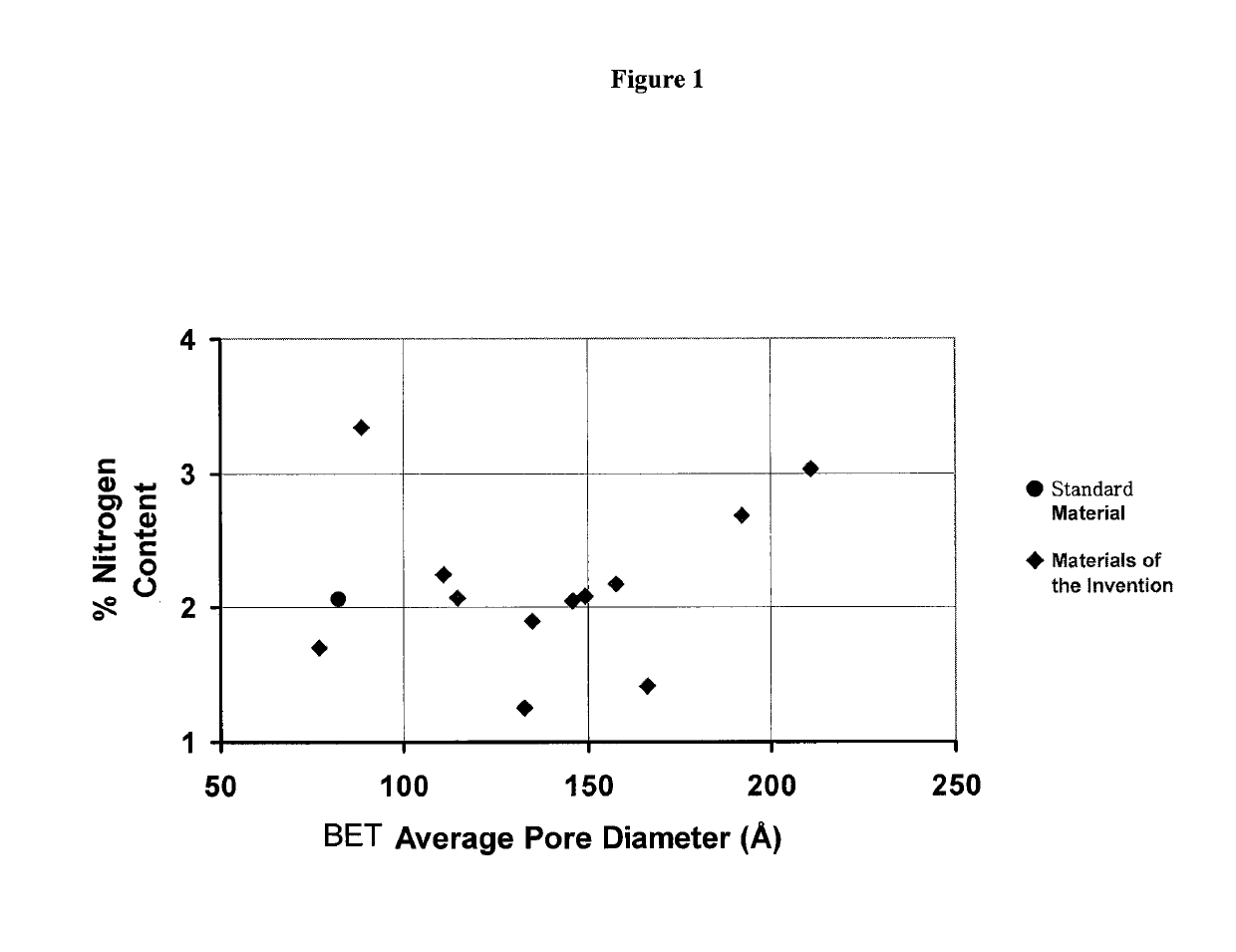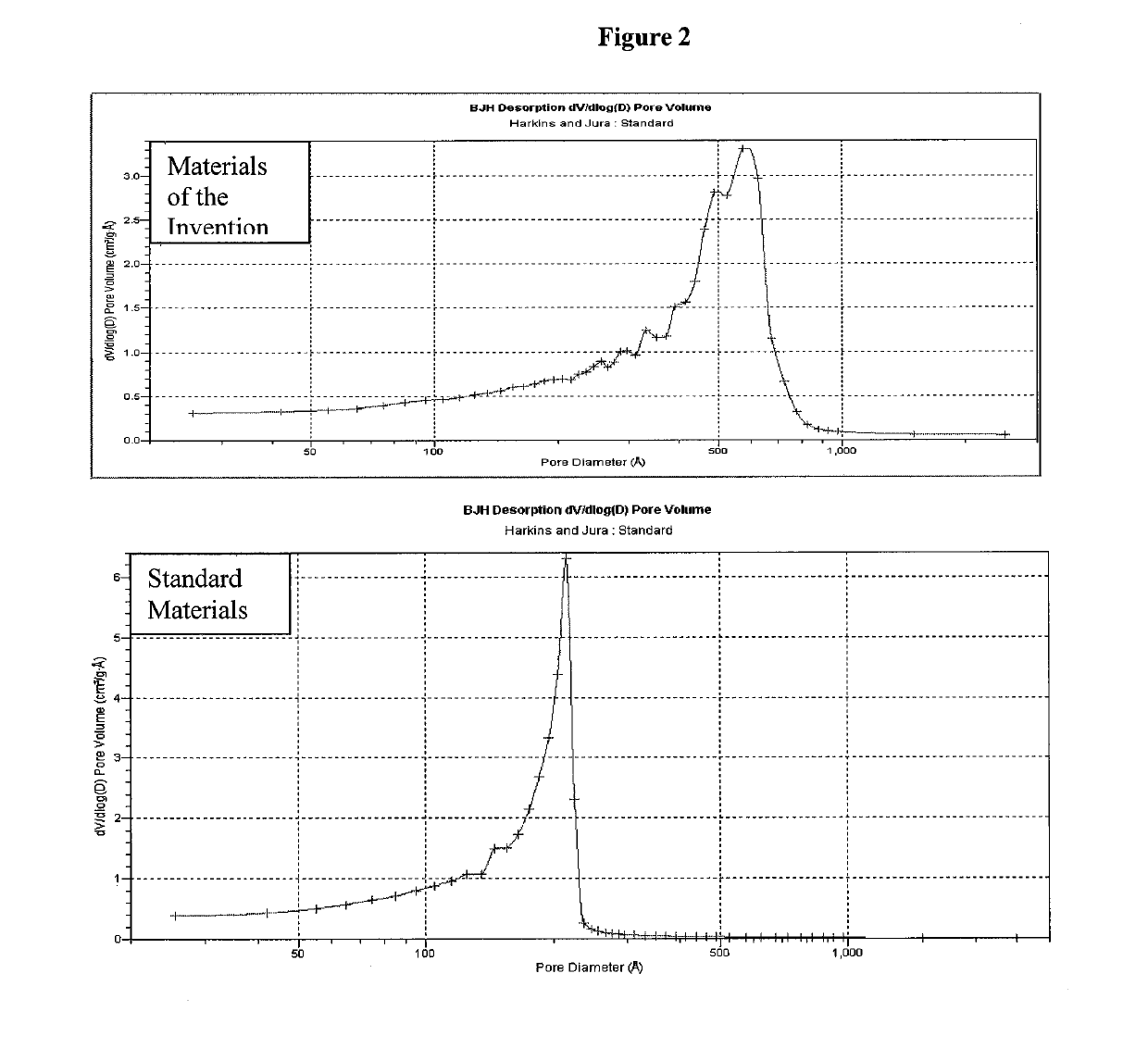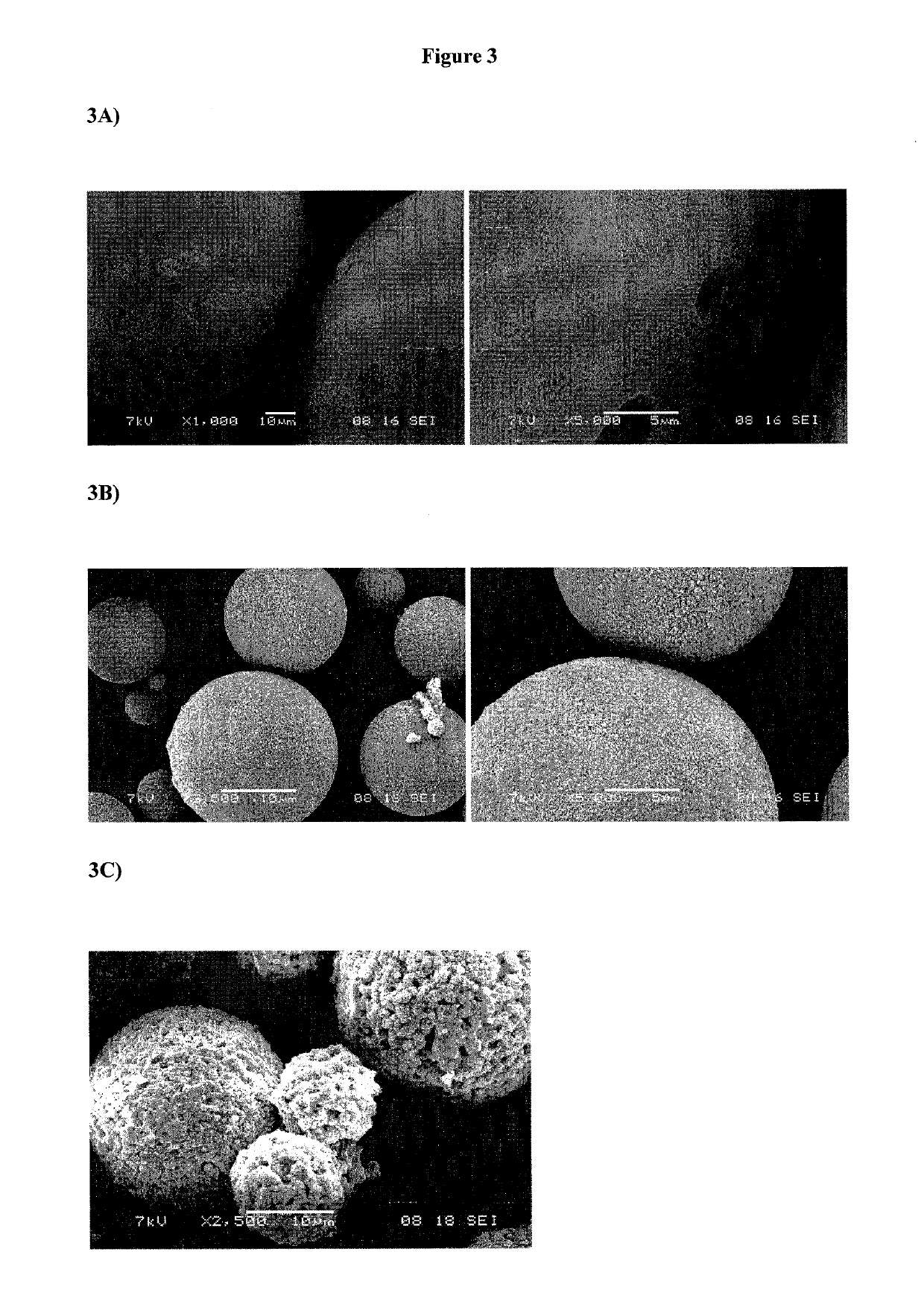Porous materials for solid phase extraction and chromatography and processes for preparation and use thereof
a technology of solid phase extraction and chromatography, which is applied in the field of chromatographic techniques, can solve the problems of too restrictive pore size of biological materials, and achieve the effects of reducing the number of samples
- Summary
- Abstract
- Description
- Claims
- Application Information
AI Technical Summary
Benefits of technology
Problems solved by technology
Method used
Image
Examples
example 1
Material Using N-vinylcaprolactam Having High Percent N / Standard Average Pore Diameter
[0130]A 5 g amount of Methocel E-15 (Dow Chemical) was dissolved in 1 L of water at 90° C., then cooled to room temperature. In a separate flask, 174.5 g of divinylbenzene (DVB 80, Dow Chemical), 139.2 g of N-vinylcaprolactam (V-Cap, International Specialty Products, Wayne, N.J.), and 1.9 g of azobisisobutyronitrile (AIBN, DuPont) were dissolved and mixed in 243 g of toluene. The organic and aqueous phases were combined in a 3 L glass kettle and stirred at 400 rpm with an overhead stirrer, while running through a static mixing loop for 30 minutes. The emulsion droplet size was checked after 30 minutes. Once the desired droplet size range had been reached (by adjusting the rate of flow through the static mixer), the static mixing loop was turned off; and the mixture heated at 70° C. for 16 hours, then cooled to room temperature. The mixture was filtered using a 20 um polyester filter cloth, washed 3...
example 2
Material Using N-Vinylcaprolactam—Standard percent N / Standard Pore Diameter
[0131]A 5g amount of Methocel E-15 (Dow Chemical) was dissolved in 1 L of water at 90 ° C., then cooled to room temperature. In a separate flask, 174.5 g of divinylbenzene (DVB 80, Dow Chemical), 87.1 g of N-vinylcaprolactam (V-Cap, International Specialty Products, Wayne, N.J.), and 1.9 g of azobisisobutyronitrile (AIBN, DuPont) were dissolved and mixed in 243 g of toluene. The organic and aqueous phases were combined in a 3 L glass kettle and stirred at 400 rpm with an overhead stirrer, while running through a static mixing loop for 30 minutes. The emulsion droplet size was checked after 30 minutes. Once the desired droplet size range had been reached (by adjusting the rate of flow through the static mixer), the static mixing loop was turned off, and the mixture heated at 70° C. for 16 hours, then cooled to room temperature. The mixture was filtered using a 20 μm polyester filter cloth, washed 3× with 600 m...
example 3
Material Using Polar Porogens—Standard Percent N / High Pore Diameter
[0132]A 5 g amount of Methocel E-15 (Dow Chemical) was dissolved in 1 L of water at 90° C. After cooling to 50° C., 3.24 g of sodium oleyl sulfate (Sipex OS, ALCOLAC) was added, and then the solution was cooled to room temperature. In a separate flask, 174.5 g of divinylbenzene (DVB 80, Dow Chemical), 139.2 g of N-vinylcaprolactam (V-Cap, International Specialty Products, Wayne, N.J.), and 1.9 g of azobisisobutyronitrile (AIBN, DuPont) were dissolved in a mixture of 106 g of diethylbenzene and 128.9 g of 2-ethylhexanol. The organic and aqueous phases were combined in a 3 L glass kettle and stirred at 400 rpm with an overhead stirrer, while running through a static mixing loop for 30 minutes. The emulsion droplet size was checked after 30 minutes. Once the desired droplet size range had been reached (by adjusting the rate of flow through the static mixer), the static mixing loop was turned off, and the mixture heated ...
PUM
| Property | Measurement | Unit |
|---|---|---|
| temperature | aaaaa | aaaaa |
| diameter | aaaaa | aaaaa |
| diameter | aaaaa | aaaaa |
Abstract
Description
Claims
Application Information
 Login to View More
Login to View More - R&D
- Intellectual Property
- Life Sciences
- Materials
- Tech Scout
- Unparalleled Data Quality
- Higher Quality Content
- 60% Fewer Hallucinations
Browse by: Latest US Patents, China's latest patents, Technical Efficacy Thesaurus, Application Domain, Technology Topic, Popular Technical Reports.
© 2025 PatSnap. All rights reserved.Legal|Privacy policy|Modern Slavery Act Transparency Statement|Sitemap|About US| Contact US: help@patsnap.com



